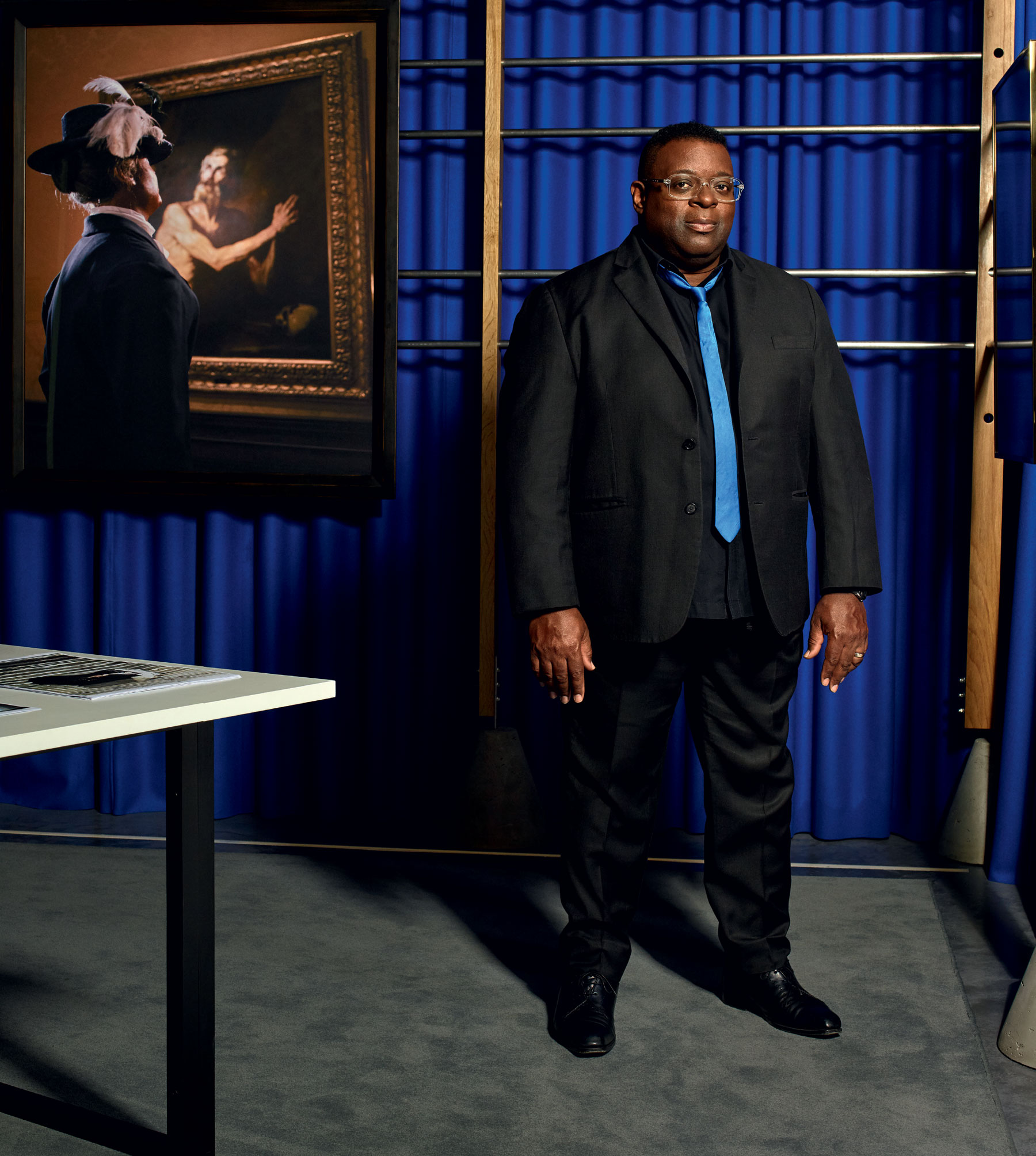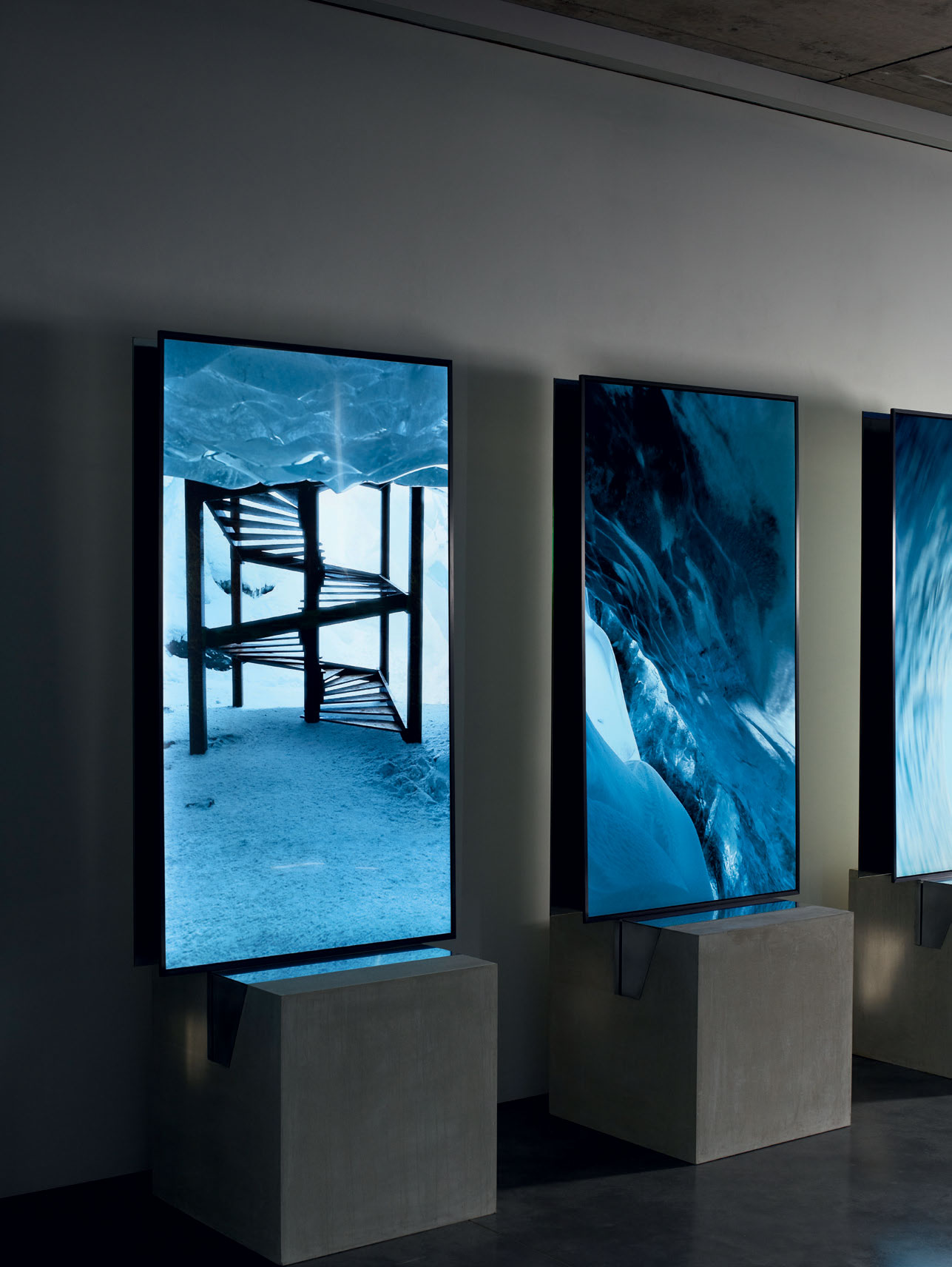Artist Isaac Julien celebrates Brazilian architect Lina Bo Bardi on film

In a darkened room flashes of looming concrete walls and extruded limbs – serial images of Lina Bo Bardi’s SESC Pompéia art and leisure centre in São Paulo – pulse to a score by the German-Spanish composer Maria de Alvear. The artist and filmmaker Isaac Julien and his editor Adam Finch – the room is part of Julien’s David Adjaye-designed studio overlooking a stretch of Regent’s Canal in north London – are working on the complex choreography of footage that will eventually play across nine carefully placed 6ft-tall screens and make up the seven distinct sections of his new work, Lina Bo Bardi – A Marvellous Entanglement. It’s a kind of dancing-about architecture and a dizzying work.
Five years, on and off, in the making, the piece is Julien’s multi-part tribute to the Rome-born polymath modernist who became Brazil’s most significant architect outside of Niemeyer. Though a long way from a straight-ahead biopic – Bo Bardi would have hated anything so linear and reductive, he says – Julien wanted to make clear Bo Bardi’s creative stretch: her smarts as writer and essayist (she worked with Gio Ponti at Domus in the mid-1940s), furniture designer, exhibition designer, costume designer, theatre designer, jewellery designer, as well as her celebrations of Brazilian pop and folk culture, her role as cultural lightning rod, and her commitment to architecture as activated social space for all. Bo Bardi’s reputational stock may have risen remarkably over the last decade, but Julien insists she is still underappreciated.

Isaac Julien in his London studio, with a screen displaying his 2019 work Lessons of the hour – Frederick Douglass and, on the table, prints from his new Lina Bo Bardi film. In the background is his studio’s recreation of a display system originally designed by Bo Bardi and presented at the 1959 ‘Bahia No Ibirapuera’ exhibition
His passion for Bo Bardi’s life and work began in 2012 when he was invited to show at SESC Pompéia. Completed in the mid-1980s and designed around the husk of a retired oil drum factory, Julien calls it a tropical version of London’s Hayward Gallery but with more community outreach. ‘They run all kinds of activities – sport, dance, theatre, music, art exhibitions. It’s really utopian and the architecture is amazing.’
Julien worked with the local architect André Vainer on the installation of his SESC show, ‘Geopoetics’. Vainer had worked with Bo Bardi on the design of the building and its creative fixtures and fittings. ‘And it dawned on me that he was using all these techniques that Bo Bardi had developed for the display of the work; from the use of the materials to how the name of the show and other information was presented. That’s when I became really interested in all things Bo Bardi.’ (Julien was so enamoured of Bo Bardi’s art display devices, simple wooden ladder systems and stark concrete plinths with glass easels designed for SESC Pompéia and her Museu de Arte de São Paulo (MASP), that he had his own made. He used them for his recent Lessons of the Hour – Frederick Douglass installation at the Metro Pictures gallery in New York.)

Designed by c, Julien’s studio features a screening room separated from the rest of the space by a blue curtain. On the screens are shots from Lina Bo Bardi – A Marvellous Entanglement, including, far right, Lina Bo Bardi, as played by the actor Fernanda Montenegro, looking through an opening in the pleated concrete walls of Coaty in the city of Salvador. On the left is Julien’s After Malevich - Red Day (Radioactive Avatar #13), 2018
More fundamentally, the show and the installation made him think about the mechanics of his own art. Julien has made his reputation with multi-screen video installations, often shown with related still photography. His work – from 1989’s Looking for Langston, through Vagabondia (nominated for the Turner Prize in 2001), Baltimore, Fantôme Afrique to Ten Thousand Waves and Playtime combines crystalline, lyrical imagery, dance and documentary, looped and fractured narratives and the occasional appearance of high-wattage stars, including James Franco and Maggie Cheung. Taking in his multiple screens requires fluid, mobile viewing, a constant flutter and flow.
‘That was one of the things I realised at SESC Pompéia; there was a choreographic conversation happening in the way Lina Bo Bardi worked scenographically,’ Julien says. ‘I had a light bulb moment in relation to my thinking about space and architecture and the distribution of images in space.’
In 2013 Julien created the poster for ‘The Ghost of Lina Bo Bardi’, an exhibition curated by Hans Ulrich Obrist at The Glass House, the architect’s former home in São Paulo. And his 2015 piece Stones Against Diamonds (Ice Cave) was inspired by a Bo Bardi letter to her husband and featured a CGI version of her staircase at the Museu de Arte Moderna de Bahia (MAM Bahia), constructed using techniques usually used in the making of ox carts. Bo Bardi managed to incorporate vernacular techniques and materials into her work more successfully than perhaps any other great modernist, a commitment which makes her work feel utterly contemporary and key to the resurgence of interest. ‘Like many emigrés, she looked at the country from a fresh perspective,’ says Julien. ‘She embraced the craftsmanship of its north east and reflected a more organic Brazilian culture back to itself.’

Detail of Julien’s Stones Against Diamonds (Ice Cave), 2015, referencing Bo Bardi’s 1959 staircase, created for MAM Bahia, and her concrete easel, originally presented at MASP, in 1969
More fundamentally, the show and the installation made him think about the mechanics of his own art. Julien has made his reputation with multi-screen video installations, often shown with related still photography. His work – from 1989’s Looking for Langston, through Vagabondia (nominated for the Turner Prize in 2001), Baltimore, Fantôme Afrique to Ten Thousand Waves and Playtime combines crystalline, lyrical imagery, dance and documentary, looped and fractured narratives and the occasional appearance of high-wattage stars, including James Franco and Maggie Cheung. Taking in his multiple screens requires fluid, mobile viewing, a constant flutter and flow.
‘That was one of the things I realised at SESC Pompéia; there was a choreographic conversation happening in the way Lina Bo Bardi worked scenographically,’ Julien says. ‘I had a light bulb moment in relation to my thinking about space and architecture and the distribution of images in space.’
In 2013 Julien created the poster for ‘The Ghost of Lina Bo Bardi’, an exhibition curated by Hans Ulrich Obrist at The Glass House, the architect’s former home in São Paulo. And his 2015 piece Stones Against Diamonds (Ice Cave) was inspired by a Bo Bardi letter to her husband and featured a CGI version of her staircase at the Museu de Arte Moderna de Bahia (MAM Bahia), constructed using techniques usually used in the making of ox carts. Bo Bardi managed to incorporate vernacular techniques and materials into her work more successfully than perhaps any other great modernist, a commitment which makes her work feel utterly contemporary and key to the resurgence of interest. ‘Like many emigrés, she looked at the country from a fresh perspective,’ says Julien. ‘She embraced the craftsmanship of its north east and reflected a more organic Brazilian culture back to itself.’
Receive our daily digest of inspiration, escapism and design stories from around the world direct to your inbox.
A version of this article originally appeared in the June 2019 issue of Wallpaper* (W*243)
INFORMATION
‘Lina Bo Bardi – A Marvellous Entanglement’, 7 June – 27 July, Victoria Miro. victoria-miro.com; isaacjulien.com
ADDRESS
Victoria Miro
16 Wharf Road
London N1 7RW
-
 A compact Scottish home is a 'sunny place,' nestled into its thriving orchard setting
A compact Scottish home is a 'sunny place,' nestled into its thriving orchard settingGrianan (Gaelic for 'sunny place') is a single-storey Scottish home by Cameron Webster Architects set in rural Stirlingshire
-
 7 colours that will define 2026, from rich gold to glacier blue
7 colours that will define 2026, from rich gold to glacier blueThese moody hues, versatile neutrals and vivid shades will shape the new year, according to trend forecasters
-
 In Norway, discover 1000 years of Queer expression in Islamic Art
In Norway, discover 1000 years of Queer expression in Islamic Art'Deviant Ornaments' at the National Museum of Norway examines the far-reaching history of Queer art
-
 Out of office: The Wallpaper* editors’ picks of the week
Out of office: The Wallpaper* editors’ picks of the week'Tis the season for eating and drinking, and the Wallpaper* team embraced it wholeheartedly this week. Elsewhere: the best spot in Milan for clothing repairs and outdoor swimming in December
-
 Out of office: The Wallpaper* editors’ picks of the week
Out of office: The Wallpaper* editors’ picks of the weekFar from slowing down for the festive season, the Wallpaper* team is in full swing, hopping from events to openings this week. Sometimes work can feel like play – and we also had time for some festive cocktails and cinematic releases
-
 The Barbican is undergoing a huge revamp. Here’s what we know
The Barbican is undergoing a huge revamp. Here’s what we knowThe Barbican Centre is set to close in June 2028 for a year as part of a huge restoration plan to future-proof the brutalist Grade II-listed site
-
 Out of office: The Wallpaper* editors’ picks of the week
Out of office: The Wallpaper* editors’ picks of the weekIt’s wet, windy and wintry and, this week, the Wallpaper* team craved moments of escape. We found it in memories of the Mediterranean, flavours of Mexico, and immersions in the worlds of music and art
-
 Each mundane object tells a story at Pace’s tribute to the everyday
Each mundane object tells a story at Pace’s tribute to the everydayIn a group exhibition, ‘Monument to the Unimportant’, artists give the seemingly insignificant – from discarded clothes to weeds in cracks – a longer look
-
 Out of office: The Wallpaper* editors’ picks of the week
Out of office: The Wallpaper* editors’ picks of the weekThis week, the Wallpaper* team had its finger on the pulse of architecture, interiors and fashion – while also scooping the latest on the Radiohead reunion and London’s buzziest pizza
-
 Out of office: The Wallpaper* editors’ picks of the week
Out of office: The Wallpaper* editors’ picks of the weekIt’s been a week of escapism: daydreams of Ghana sparked by lively local projects, glimpses of Tokyo on nostalgic film rolls, and a charming foray into the heart of Christmas as the festive season kicks off in earnest
-
 Wes Anderson at the Design Museum celebrates an obsessive attention to detail
Wes Anderson at the Design Museum celebrates an obsessive attention to detail‘Wes Anderson: The Archives’ pays tribute to the American film director’s career – expect props and puppets aplenty in this comprehensive London retrospective